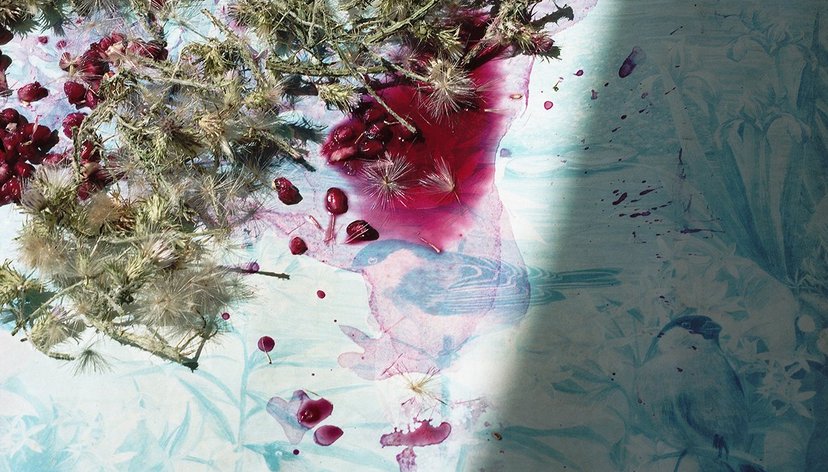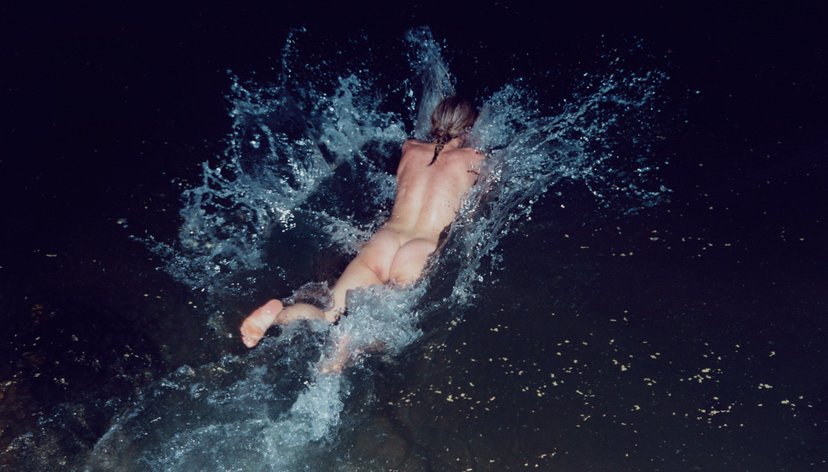
Key details
Date
- 10 September 2024
Author
- Lisa Pierre
Read time
- 5 minutes
Jung Lee (MA Photography, 2005) is a Korean artist based in Seoul and is best known for her photographs of text-based neon light installations set directly into the landscape. With contrasting sentimental phrases juxtaposed with stark layouts of deserted plains or barren snow fields, she makes strong emotional statements.

One source of inspiration for many of her artworks is Roland Barthes's book 'A Lover's Discourse'. Lee slows everything down, patiently analysing that most intense and overwhelming of states, unanswered desire – the language of complete love and the deep solitary state it throws the lover into. She collects clichéd expressions of love and hatred such as ‘How could you do this to me?’ and ‘I still remember’ and gives them resonance in the form of powerful proclamations.
Her work has been shown globally and her collaborations span from fashion to music, including Saint Laurent and Maroon 5. She is currently participating in a group show titled 'UNDERSTAND' organised by Harper's Bazaar Korea in addition to participating in the Biennale Images Vevey 2024.
“My work deals with text, but it focuses more on the complex emotions behind the text rather than its meaning. Interpretation is open to the viewer's perspective.”
Artist
How Do You Feel Your Practice Has Evolved Over Time?
When I was at RCA, I developed an interest in text. I pondered how to combine images and text. For my graduation project, I inserted propaganda slogans into the landscapes of North Korea's border areas. After returning to Korea, I continued this series for a while. Later I came up with the idea of using neon signs instead of text overlays. As I began installing neon for photographic work, my practice naturally expanded into installation art, which also allowed me to explore the abstraction of text.
Having previously studied mass communication & journalism, do you feel you were drawn to the power of words to be encapsulated on your photography?
My previous major naturally influenced my photographic practice. I always notice text before images. For me, text and image are of equal importance. A common question I receive about my work is whether I think of the text first and then envision the landscape, or if I see the landscape and then come up with the text. Naturally, the text comes first. Then, I imagine and seek out landscapes that resonate with the text.

Roland Barthes's book 'A Lover's Discourse' forms a base code to love rooted in classic references, melancholic and with the sense of suffering. What attracted you to use themes from this book for your body of work Aporia?
When I first started the Aporia series, it was difficult to create narratives from common, everyday phrases. I felt that I needed a new perspective to spark my imagination. His book served as a kind of fuel for that. I found Roland Barthes' portrayal of words as if they were living entities in ‘A Lover's Discourse’ fascinating. The idea of words floating in the void, unable to settle between you and me, intrigued me. I would call this the ‘personification of words.’ His book became a significant impetus for me to visualise the images of words and to develop the Aporia series.
A lot of Barthes' work looks at narratives weaving together in different ways. Do you feel that your work also highlights this?
Roland Barthes helps us understand the various facets of text. Words of love can be piercing, clichéd, lonely, beautiful, and sometimes even humorous. I hope that my work conveys the diverse aspects of these words as Roland Barthes did.
What we see is a beautifully curated image. What are some of the difficulties in producing your work (such as power for the signs or weather conditions)?
All of my shoots take place in Korea, and finding locations is extremely challenging. I spend a lot of time and effort searching and observing. I prefer landscapes that are untouched and purely abandoned. I enjoy watching these landscapes change and evolve on their own. I believe that every landscape has its own unique moment, and I prepare diligently to capture it. It’s not just about travelling to a place, setting up, and shooting. For example, I might imagine what a location would look like if it snowed and then return to shoot when it does. It’s common for me to find that a location I’ve discovered has been developed and vanished by the time I revisit. It’s important not to be discouraged but to continue with my work.
What ideas, if any, of love and ambiguities do you hope we interpret looking at your work?
My work deals with text, but it focuses more on the complex emotions behind the text rather than its meaning. Interpretation is open to the viewer's perspective. I am truly delighted to receive feedback that my work has provided comfort to some viewers.
Do you use a digital or analogue film/camera?–has this changed overtime?
I work only with film, using a Toyo 4x5 inch field camera and Fuji Velvia 50 film. Since Velvia 50 has been discontinued, I’m currently using stock I've purchased earlier. My process involves film scanning and post-production, presented as large prints.
While the latter part of my process - beginning with film scanning - involves digital technology, my work is fundamentally and thoroughly analog. Both neon and film require patience and waiting. I do not rely on immediate results or judgements. As an artist, I don’t want to lose the sense of anticipation and excitement that comes with my work.

Should artists manipulate an image to create an idealised shot, or should they capture a true likeness?
I am among the last generation to experience both digital and analog techniques at the same time. During my undergraduate years, I spent a lot of time in the darkroom and explored various types of film. This practice later proved invaluable for my large-format printing. Even when using digital technology, I maintain an analog feel throughout the whole process. I physically install text in landscapes and experience firsthand the moments when neon light and natural light intersect. Conveying these moments to the viewer through exhibitions requires intense focus.
Artists move in the direction that excites them. Whether through digital manipulation or actual capture, or staging, it is the artist’s excitement that drives the authenticity of the work.
Do you think digitalization has given the medium of photography boundless potential or has it taken away the creativity?
While digital technology has opened many possibilities for photography, it has also accelerated the perception that photography is easy and convenient. However, creativity remains a realm that is difficult to achieve in any genre, not just photography. If digital technology prompts one to question their own creativity, it can be seen as a positive development. Creativity often emerges from pushing through dead ends. Whether to use digital tools to create more innovative work or to strive for something that cannot be replaced by digital means is entirely up to the artist.
SOMEWHERE BETWEEN DAY AND NIGHT was an exhibition which showcased various works, some never before exhibited in Korea. What was it like to show your work in your home country?
Although I work with text in English, the response to my work is universal. It is not particularly different just because it is in Korea. If there is a distinction between my work and that of other text-based artists, I think it's that my work appeals to universality.
Can you tell us what future projects are you working on?
Recently, I presented a new neon installation titled ‘I LOVE YOU WITH ALL MY HEART’ in a group exhibition. This phrase holds a special significance for me. I am interested in exploring the texts I have used in my work. Currently, I am also focusing on the series called ‘LOVE', which serves as my homage to Robert Indiana.


